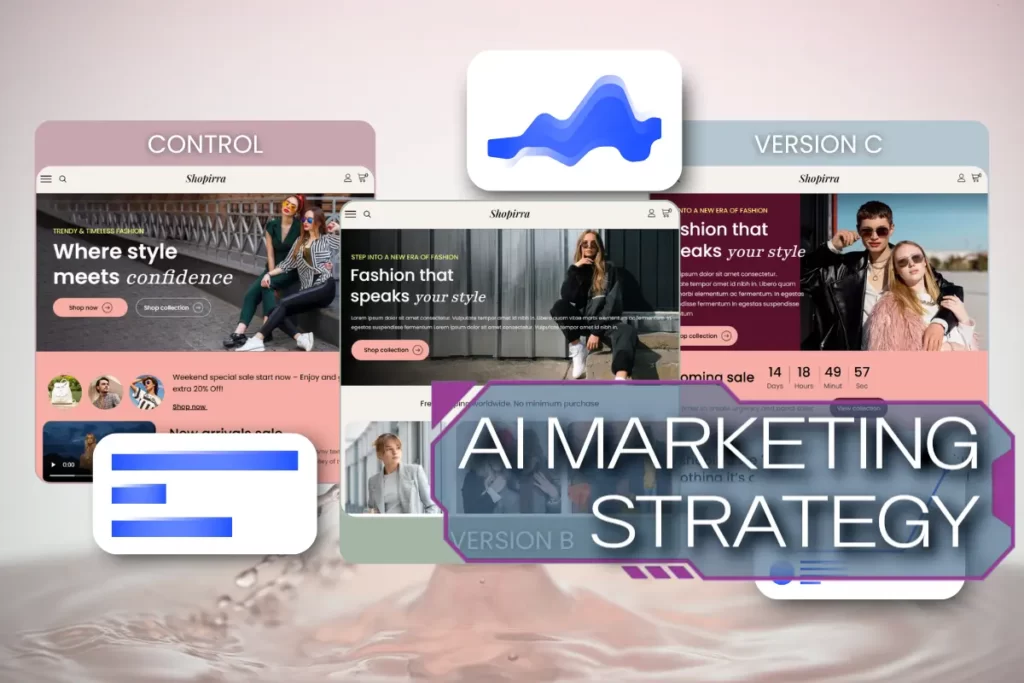If you’re still treating marketing experimentation like a “nice-to-have,” it’s time for a reality check. Today’s most successful brands aren’t sitting back and hoping their strategies work. They are testing bold ideas, tweaking what sticks, and exploring multivariate testing in marketing. All while sprinkling smart AI into the mix without losing the important part, human flavor.
Here’s how experimentation, automation, and creativity can work together to drive some seriously sweet results.
Put It to the Test (Yes, That Idea Too)
Forget the perfection mindset. Marketing is about figuring out what actually works by trying things that might not. Whether it’s testing subject lines, switching up visuals, changing audience segments, or applying multivariate testing in marketing, smart experimentation gives your team the data (and confidence) to make smarter moves.
And the truth? Brands that build experimentation into their process aren’t taking risks; they are actively reducing them.
So, if you ever find yourself wondering if a headline, call-to-action, or creative tweak would perform better, the answer’s simple: you should test that.
🍭 What’s the Difference? A/B vs. Multivariate Testing
There’s more than one way to test your ideas. A/B testing helps you compare two versions of a single element to see which works better. For example, you might change the image, the button CTA, or the heading.
Multivariate testing in marketing takes it further by testing multiple variables at once to see which combinations drive the best results. It’s especially handy when you’re changing several elements across a landing page, email, or ad.
Create a Culture Where It’s Okay to Mess Up (On Purpose)
Fear of failure slows everything down. If your team is afraid to take risks, innovation stalls. That’s why creating psychological safety on your team isn’t just fluffy leadership talk. It’s how you get the boldest and tastiest ideas on the table.
Encourage your crew to test wild ideas, push boundaries, and learn from the flops. Give them room to sprinkle some creativity without dreading the crash. Your next high-performing campaign might be hiding in the “what if we tried…” conversation someone’s too afraid to have.
Leadership plays a big role here. Budget for tests. Celebrate learnings. And most importantly: normalize the idea that trying and failing beats standing still.
When AI Supports, Creativity Soars
Let’s be real: AI isn’t a magic fix, but it can make your work more efficient and more personal. We’re talking faster testing, better segmentation, and messaging that actually connects.
HubSpot’s Kipp Bodnar shared how their team uses AI to personalize email content based on behavior and not just best guesses. The result? It freed up time for his team to focus on strategy and creative work, while still delivering messages that felt relevant.
Beyond email, AI is helping marketers offload repetitive tasks that often slow down the creative process. Here are a few tasks AI can streamline without replacing your team’s creative value:
- Sorting and tagging content so your library doesn’t turn into digital junk food.
- Spotting which audiences are most likely to click, convert, or bounce.
- Whipping up first draft headline or ad variations to kickstart your brainstorms.
- Recommending existing content assets for repurposing or optimization.
- Serving up recommendations based on user behavior and engagement patterns.
So while AI handles the tedious parts, your team gets the brain space to think bigger, write better, and create the kind of content that actually gets remembered.
Build a Test-and-Learn Framework That Works
Ready to start experimenting with purpose? Try this sweet little structure:
- Pick your hypothesis – Keep it simple. Think: “Will a shorter subject line increase email opens?”
- Set up your test – A/B testing tools are your best friends, but don’t stop there. Multivariate testing in marketing can help you refine multiple elements at once. Start small and scale up.
- Measure what matters – Don’t get lost in vanity metrics. Focus on what moves your business forward.
- Review + repeat – Take what you learn, tweak, and try again. Every test builds momentum.
Pro tip: Document your tests. Over time, you’ll build a library of what’s worked and what flopped. This helps you avoid fixing what wasn’t broken, or worse, breaking what worked.
Why It All Still Comes Down to Connection
Experimentation and automation are sweet tools, but they’re not the goal. Real connection happens when your audience feels like the message was made just for them.
That’s where creativity still rules. It’s in the turn of phrase that makes someone smile. The unexpected color palette. The headline that feels like it read their mind. AI can help you scale, but heart is what makes your brand memorable.
Ready to Mix Strategy with a Dash of Sweetness?
Want a team that brings the brains and the bold ideas? We’re all about testing, learning, and delivering results that stick.
Let’s chat and build a delicious strategy.

